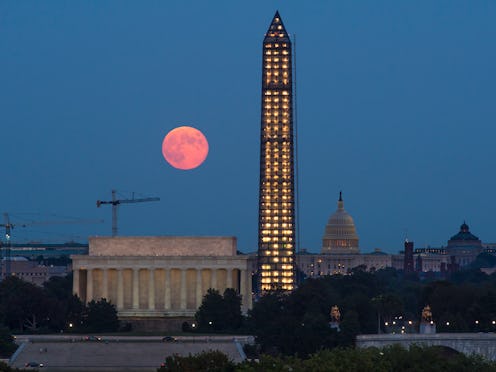Life
Why Equinoxes Happen In Different Hemispheres
The official start of fall is fast approaching, with the autumnal equinox set to occur next Thursday, September 22 — that is, if you’re in the Northern Hemisphere. Folks in the Southern Hemisphere will experience the vernal equinox. Why do different hemispheres have different equinoxes? It all has to do with the Earth’s position in relation to the sun.
Each of the four seasons starts with one of four events: The spring (or vernal) equinox, the summer solstice, the autumnal (or fall) equinox, and the winter solstice. In very basic terms, the equinoxes are the two days of the year that night and day are almost equal in length. The summer solstice is the longest day of the year, and the winter, the shortest. These variations in the length of days arise from the Earth’s changing position in relation to the sun throughout the year; this shifting position controls the seasons, and it’s also the reason that there are different equinoxes and solstices depending on which hemisphere you’re on.
The Earth is tilted at an angle as it orbits around the sun, meaning that, for most of the year, one hemisphere receives more direct light than the other. On the autumnal equinox, the sun lines up directly over the equator, shining equally on both hemispheres, so that, at least briefly, they both have days of (nearly) the same length.
The autumnal equinox marks a shift in where the sun shines most directly on the Earth: Prior to the equinox, the Northern Hemisphere tilts toward the sun (that’s why the summer has long, hot days). After the equinox, the Northern Hemisphere starts to tilt away, and the sun begins to shine more directly on the Southern Hemisphere. The Northern Hemisphere gets less and less direct sun, leading to shorter days and cooler temperatures — aka, Autumn. In the Southern Hemisphere, this same September occurrence is called the “vernal” or “spring” equinox because the opposite occurs: Before the equinox, the Southern Hemisphere is tilted away from the sun — causing winter — and after, the Southern Hemisphere leans toward the sun, ushering in the longer days and warmer weather of spring.
The solstices, in turn, mark the times that a hemisphere is most or least tilted toward the sun. The Northern Hemisphere reaches its maximum exposure to the sun in June (summer solstice), and its furthest tilt away from the sun in December (winter solstice). The Southern Hemisphere experiences the opposite: In places like Australia and Argentina, the day with the most sun exposure is in December (summer solstice) and the day with the least is in June (winter solstice). And that, my friends, is why people down south are heading into spring and summer, and those of us in North America are trying to figure out where we stashed our winter coats.
The autumnal equinox may not be here until next Thursday, but you can kick of your fall celebrations today by going out to view the harvest moon, the full moon closest to the equinox. Put on a sweater, grab a pumpkin-flavored beverage, and say “Hello!” to autumn.
Image: Giphy
